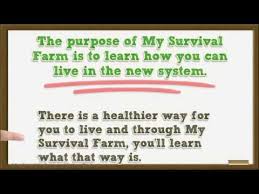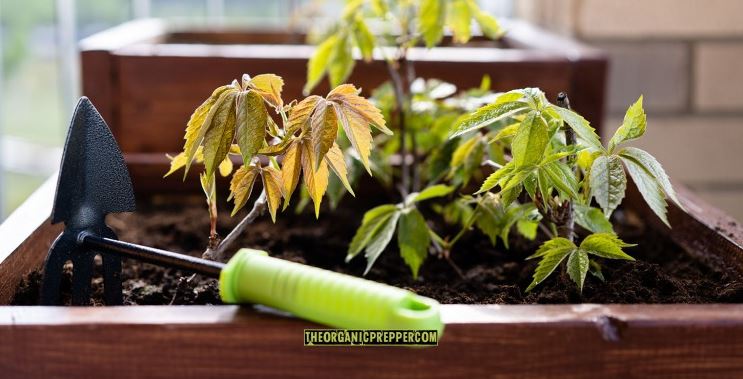Container gardening is ideal for those with little to no garden space. Even if you live in a condo or apartment and are limited to your patio, you can still produce many different vegetables.
Anything that can be grown in-ground can be grown in a container garden. This writer has grown potatoes, squashes, greens & herbs, pumpkins, cucumbers, and even tomatoes in containers. In this article, I’ll discuss the different types of containers I’ve used, what I like & don’t like about each, and what’s best suited to grow in each type.
Cloth bags
Cloth bags for container gardening come in various sizes, from 10 to 45 gallons. They are marketed as potato bags, smart pots, and some garden walls.
Smart pots are often made of stiff felt and used to give trees a home until conditions are right to plant them, i.e., warmer weather and soil temperatures.
Potato bags can be made of medium plastic or fabric. I use both for growing potatoes, although the larger bags are suitable for many things. Potato bags drain well, and my potatoes produce. But the plastic bags don’t last more than a season or two. Also, bags are more suited to indeterminate potatoes than determinants, but we work with what we have.
Garden walls are hanging pockets made of thick felt. The felt can better retain water and release it slowly to achieve ideal soil conditions.

Self-Watering containers
Self-watering containers, or SWCs, have a reservoir in the bottom that holds water. The water wicks up through the soil, keeping the plants from drying out and sparing the gardener having to water every day. The reservoir is filled via a small tube on the side. There’s usually an overflow option, allowing the container to be drained. Most that I’ve seen are made of heavy plastic, which I like. I’ve had my Earth Boxes for more than five years, and they survived a Wisconsin winter outside. That’s sturdy!
While I love the size and mobility of my Earth Boxes, I am not a huge fan overall. If I have a rainy summer, the soil never has a chance to dry, leaving my plants with wet feet. That, of course, leads to root rot, stunted growth, and low productivity. Gardeners in drier climates may have more use for these when container gardening. I drilled holes in the bottom to improve drainage. As of this writing, that’s an experiment in progress.
Stackable containers
Stackable containers tend to be smaller and allow for the use of vertical space. They’re more suited to greens and herbs in my experience. However they are a very viable option for container gardening in small spaces. There are many great options available—like this Happy Place Products garden tower or this self-watering one from Mr. Stacky.
Elevated containers
This type of container has legs and tends to be waist-high. They can be made of wood or metal or a combination of those. They also come in many sizes; VegTrug ranges from one to two meters in length and has a triangular bottom for growing root crops. Wooden containers may need to be treated with a food-grade sealant. Metals should be kept away from the soil or be non-reactive to avoid heavy metals poisoning.
The big advantage here is not having to bend over. I’ve grown various plants in my elevated bed, from potatoes, carrots, and radishes to broccoli and cauliflower.
Green walls
Garden walls are made from a variety of materials and allow the gardener to grow vertically. I’ve seen everything from a sheet with pockets reminiscent of a shoe rack to stacked window boxes. You can repurpose pallets and two-liter soda bottles to make these. Several single pots inserted into a wire frame on a wall works great. There are many DIY tutorials out there you can check out. The only limit is your imagination!
Soil best suited to container gardening
Containers have different needs than raised beds, so they need the appropriate soil. I find either potting mix or a mixture of that with garden soil works well. Containers tend to dry out quicker than either raised beds or in-ground gardens, but the medium mustn’t be so heavy that the plant’s roots can’t grow through it. Plants in containers will also use nutrients more quickly. Surprisingly enough, potting soil doesn’t have the nutrients one would expect.
My personal favorite, MiracleGro Potting Mix, is a mixture of sphagnum moss, bark fines, coconut coir, perlite, and plant food. Plant food tends to be NPK and ignores the micronutrients, all of which are as important as the Big Three. Good to know when choosing soil for your container garden.
Lessons in Container Gardening: Potting Soil Nutrition
I’ve used MiracleGro for many years with good results. Plant food added, right? That’s got to be good! It never occurred to me that the additive included only NPK. Surely soil has everything a plant needs to grow, right? Wrong!
A few weeks ago, I was puttering around in my garden, training my squash plants to grow up the trellis, when I noticed this very cool variegation on a few of the leaves. I enjoy variegated leaves in my house plants. But wait, this can’t be right! The leaves were losing pigment between the veins, classic leaf chlorosis. While the veins were still green, the rest of the leaf turned yellow—a sign of classic nutrient deficiency, either nitrogen or magnesium.
Since my potting soil has nitrogen added, I thought the culprit was likely magnesium. Magnesium is a critical nutrient to enzymes within the chlorophyll, so the deficiency results in leaf chlorosis. Thankfully I have a fertilizer containing magnesium, calcium, and iron. So, I mixed some in water and immediately applied it to the container. I applied another dose a few days later, including all of my containers for good measure. Doing so resolved the problem, and my squashes are producing!

Are you ready to give container gardening a try?
With a little planning you can have your own vegetable garden right there on your balcony. And, once you have your first harvest, Daisy’s pdf book The Seasonal Kitchen Companion can help you store, prepare and preserve those goodies!
What would you like to plant? Have you already grown an amazing garden in that little strip of sunshine? Share your success with other readers! Let’s get growing!
source : Jayne Rising



